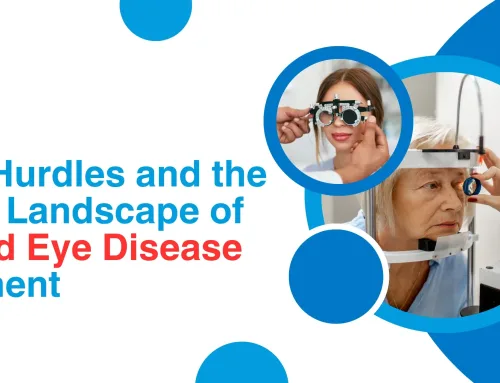Gastroesophageal Reflux Disease (GERD) often manifests with classic symptoms like heartburn, regurgitation, and chest pain. However, there’s a subset of individuals with GERD who experience what is known as “silent symptoms”.
These subtle signs can be less obvious but may still indicate the presence of acid reflux and its potential impact on overall health. In this exploration, we uncover these less obvious signs of GERD and highlight the importance of recognizing them for timely intervention.
Understanding Silent Symptoms of GERD:
While heartburn is a hallmark symptom of GERD, not everyone with the condition experiences this classic discomfort. Silent symptoms refer to the subtler signs of acid reflux that may not immediately raise suspicion but can have significant implications for one’s health. Recognizing these less apparent signs is crucial for early detection and effective management of GERD.
1. Throat Clearing and Persistent Cough:
Persistent throat clearing or chronic cough that doesn’t resolve could indicate silent acid reflux. Stomach acid can irritate the throat and airways, triggering a reflex to clear mucus. Individuals experiencing a lingering cough without an apparent cause should consider the possibility of silent reflux.
2. Hoarseness and Voice Changes:
The irritation caused by stomach acid can extend to the larynx, leading to hoarseness or changes in voice quality. Individuals with silent reflux may notice their voices becoming raspier or more strained over time. This subtle sign is often overlooked but warrants attention, especially when accompanied by other symptoms.
3. Difficulty Swallowing (Dysphagia):
Silent reflux can contribute to developing esophageal strictures, making swallowing more challenging. Individuals experiencing persistent difficulty swallowing, the sensation of food getting stuck, or the need to drink liquids frequently while eating should seek medical evaluation to rule out GERD-related complications.
4. Asthma-Like Symptoms:
Some individuals with silent reflux may experience symptoms resembling asthma, such as wheezing, shortness of breath, or chest tightness. The correlation between GERD and asthma is complex, but the presence of respiratory symptoms should prompt consideration of acid reflux as a potential contributor.
5. Chronic Throat Irritation:
Chronic irritation in the throat, often described as a feeling of a lump or foreign object, can be a less obvious sign of silent reflux. The continuous exposure of the throat to stomach acid may lead to inflammation, creating discomfort that persists even in the absence of heartburn.
6. Dental Problems:
Acid reflux can have implications for oral health. Erosion of tooth enamel, increased tooth sensitivity, or unexplained cavities may be signs of GERD. Dentists may be the first to identify these issues, highlighting the importance of interdisciplinary collaboration in recognizing less apparent signs of reflux.
7. Chronic Fatigue and Sleep Disturbances:
The impact of silent reflux extends beyond the digestive system. Chronic fatigue, difficulty falling asleep, or disrupted sleep patterns may be associated with nighttime acid reflux. Individuals experiencing unexplained fatigue should consider the possibility of GERD and its effects on sleep quality.
Recognizing the Importance of Early Detection:
Identifying less apparent signs of GERD is crucial for several reasons:
- Preventing Complications: Silent reflux can lead to complications such as Barrett’s esophagus, esophageal strictures, and an increased risk of esophageal cancer. Early detection allows for timely intervention to prevent or manage these complications.
- Enhancing Quality of Life: Addressing silent symptoms early can improve an individual’s overall quality of life. Effective management of acid reflux relieves discomfort and prevents potential long-term consequences.
- Guiding Treatment Approaches: Recognizing less apparent signs of GERD helps healthcare professionals tailor treatment approaches to address specific symptoms and their underlying causes. Personalized care enhances the likelihood of successful symptom management.
Seeking Professional Evaluation:
If you suspect silent reflux based on less apparent signs or are experiencing persistent symptoms, seeking professional evaluation is essential. Healthcare professionals, including gastroenterologists, otolaryngologists, and pulmonologists, play critical roles in diagnosing and managing GERD. Diagnostic tools such as endoscopy, pH monitoring, and imaging studies may be employed to assess the extent of acid reflux and its impact on the digestive and respiratory systems.
Lifestyle Modifications and Medical Interventions:
Once diagnosed, management of silent reflux typically involves a combination of lifestyle modifications and, in some cases, medical interventions:
- Dietary Changes: Identifying and avoiding trigger foods can reduce the frequency of acid reflux episodes.
- Elevating the Head of the Bed: Sleeping with the upper body elevated can minimize nighttime reflux.
- Medications: Antacids, H2 blockers, and proton pump inhibitors (PPIs) may be prescribed to reduce acid production and alleviate symptoms.
- Weight Management: Maintaining a healthy weight is crucial for managing silent reflux, as excess weight can contribute to increased intra-abdominal pressure.
Conclusion: Advocating for Your Digestive Health:
Recognizing the less obvious signs of GERD empowers individuals to advocate for their digestive health and seek timely intervention. Whether experiencing a chronic cough, hoarseness, difficulty swallowing, or other subtle symptoms, it’s essential to communicate these concerns with healthcare professionals who can guide comprehensive evaluation and personalized management.
By shedding light on silent symptoms and emphasizing the importance of early detection, individuals can take proactive steps toward effective GERD management, improving their overall well-being and preventing potential complications associated with untreated acid reflux.





![Home Depot Health Check App: Employees And Associates Will Enjoy Unbelievably Great Benefits[2023]](https://timeforknowledge.com/wp-content/uploads/2023/12/Home-Depot-Health-Check-500x383.webp)



